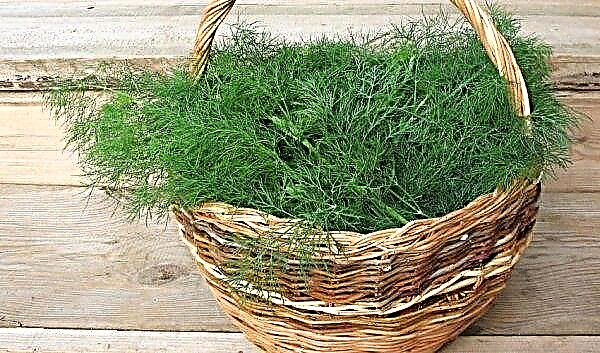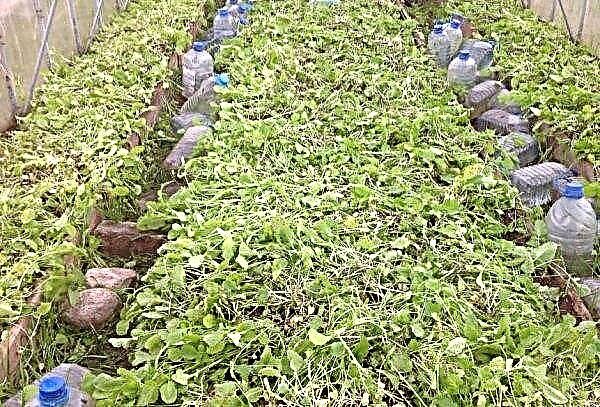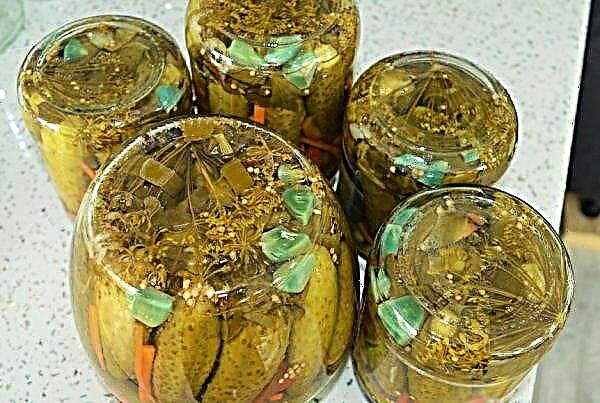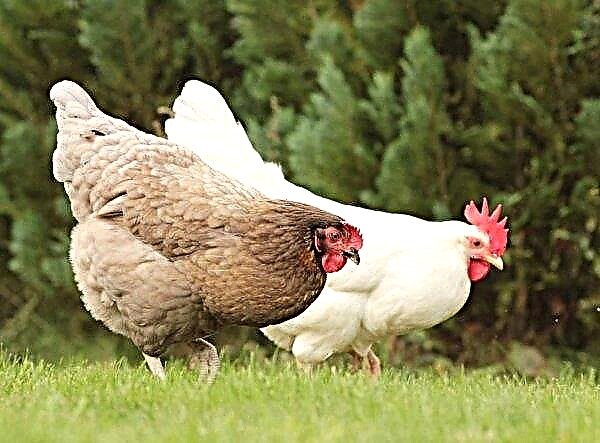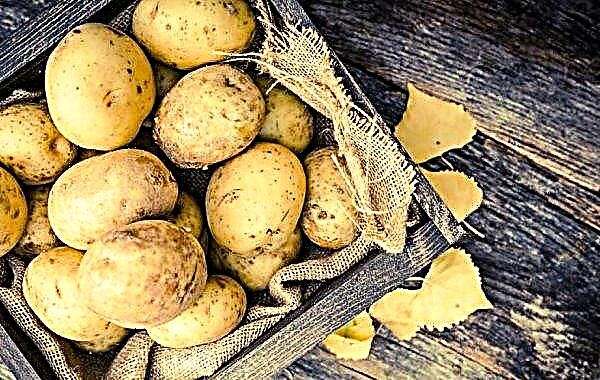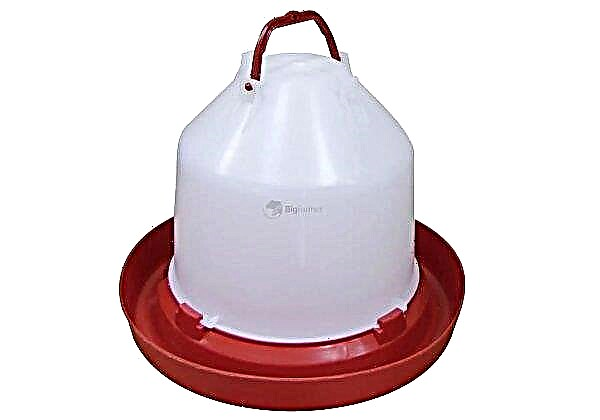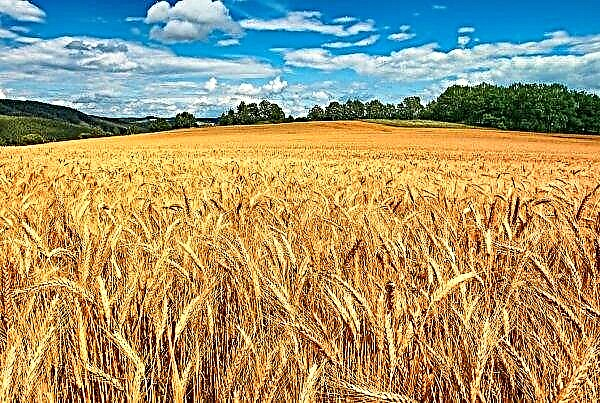Many cultivated plants to one degree or another are susceptible to infectious and fungal ailments, which almost all gardeners face. Beets in this matter is not an exception, which means that every summer resident should understand in more detail its possible diseases, methods of their manifestation and further elimination. Consider the most common options for such unpleasant phenomena.
Beet Disease
Beets are often affected by fungal diseases, but do not exclude the possibility of developing a viral infection transmitted from neighboring crops. Surely many of the following list of plant ailments are already familiar to you, however, their manifestation and method of elimination during the cultivation of beets can vary significantly, so we will pay more attention to each of them.
Phomosis (zonal spotting of beets)
This ailment has a fungal nature of origin and affects not only the leaves, but also the fruits of the plant. There are several types of this disease, but the most dangerous and common one is the shoot root, which, if untreated, can provoke the development of rotting rot.

The main symptoms of phomosis are:
- large light brown spotting on leaves, stems or even peduncles, with pronounced zonality;
- the formation on the roots of areas resembling dry rot, but without the formation of superficial mycelium;
- the dark brown color of the fetal tissues when cut;
- rotting of affected tissues with the formation of pycnidia on the surface.
Did you know? In the XV – XVII centuries, the population of Eastern Europe and the Balkans consumed beets en masse, believing that the fruit juice would protect against plague. On Russian soil, this plant appeared in the XIV century.
As for the treatment of the disease, special fungicides (for example, “Altazol”, “Alpari”, “Benazol”), Bordeaux fluid (1%) are often used or unplanned top dressing with boron-containing compounds is often used for this purpose.
As a preventative measure it is possible to advise the observance of crop rotation, the selection of resistant beet varieties for planting, the destruction of all plant residues in the fall, good fertilizing of the site with manure and preparations containing manganese, zinc, boron, molybdenum, iron.
Cercosporosis
Another fungal disease caused by infected seed or diseased parts of other plants. Getting on beetroot leaves, the fungus multiplies quite quickly, and very soon the first signs of its activity will be noticeable.
The main symptoms of cercosporosis include:
- small gray spots on leaves with a reddish-brown border, which eventually decrease in size and more resemble ordinary dark dots;
- the death of first large and old rosette leaves, and then smaller ones;
- twisting of leaf plates downward along the central vein;
- inter-row spacing due to wilted tops;
- deterioration in the development of root crops;
- 20–50% reduction in sugar content in fruits.
Among the effective drugs in the fight against the disease distinguish: “Gamair”, “Pseudobacterin”, “Benomil”, “Alirin-B”, and soap remedies (sometimes with ashes) are referred to folk remedies, but, in truth, they are not very effective against fungal infections.
The main preventive methods advocate the fulfillment of crop rotation requirements and the use for planting uninfected seed material in areas with "healthy" soil.
Powdery mildew
This ailment is known to many summer residents, because its symptoms can occur when growing a large number of different crops (for example, dill, wheat, watermelons, cabbage, zucchini, potatoes). The causative agent of the disease is a fungus from the class of Ascomycetes, which is excellent in the area during dry and hot weather, especially along with infected seeds of other plants, the remains of other crops and root heads.

The main symptoms of the development of an ailment on beets are the following manifestations:
- white powdery coating on the lower and middle leaves of the rosette, which from small spots grows to the size of the leaf itself;
- the appearance on the plaque of brownish, and then black dots, better known as cleistothecia;
- violation of the synthesis of sugars in the leaves and the outflow of plastic substances into the root zone, as a result of which the leaves age quickly.
Among agrotechnical methods for prevention, they are distinguished compliance with crop rotation rules, deep plowing of the territory, competent and timely irrigation and plowing of the site.
Important! Contaminated plant debris cannot be thrown away or stacked in a compost heap. Completely clean the area and prevent the spread of fungus in the future will only help the burning of leaves and other parts of diseased vegetation.
Rhizomania (beet beard)
In this case, we are talking about a viral illness caused by the virus of necrotic yellowing of the veins. The carrier of the disease is a unicellular parasite from the plasmodiophore squad, whose activity increases at high temperatures and excessive humidity. When growing beets in dry regions, the likelihood of rhizomania is much lower, but in this case it is worth knowing about the possible symptoms of its development.
First of all, they include:
- loss of gloss and elasticity of beet leaf plates;
- reduced growth rate;
- chopping fruits, with a very shortened lower part and a solid consistency inside.
Video: Sugar Beet Disease - Rhizomania
Infected plants can be treated with fungicidal preparations, for example, Fundazol or Benazol, but spraying the uterine fruit with Rovral means a greater result.
To prevent the ailment, it is necessary to take care of preventive measures, with pre-planting treatment, timely destruction of plant residues and enrichment of the soil with mineral fertilizers, necessarily with bromine content.
Ramulariosis
This ailment is often confused with the above-described cercosporosis, which can be explained by the similarity of manifestations. The main difference between these diseases is the color of the spots, which is much lighter in the case of ramulariosis, almost white. In addition, one of the differences is the size of the dots: in the latter case, it is only 1–2 cm in diameter.

In general, the list of characteristic symptoms of this disease includes:
- gray-green spots on irregular-shaped leaves, which eventually turn brown and become whitish (in the middle of the spot small white dots are clearly visible);
- cracking of tissues inside the spots, with their further loss and death of the entire leaf plate;
- the spread of spots in the direction from the lower leaves to the petioles and tops;
- chopping fruits.
Preventative measures - standard and include compliance with crop rotation requirements, weed control and careful selection of planting material.
Peronosporosis (downy mildew)
Powdery mildew more often than other ailments affects beets, especially if plants are grown in high humidity. This fungal disease affects mainly beet tops, due to which it appears first purple plaque, and then yellow spots, rapidly growing throughout the leaf plate.
In addition, the main signs of fungal activity include:
- deformation of sheet plates;
- thickening of their tissues, fragility and rapid death of leaves;
- deformation of peduncles and the slowdown of their development.
Did you know? To preserve the maximum supply of nutrients in beets, it must be cooked in unpeeled form, removing the skin from an already cooked vegetable. For the same purpose, it is not recommended to remove the tail from the vegetable.
Fusarium
The causative agent of this fungal disease is called Fusarium oxysporum, F. Solani and belongs to the class of Deuteromycetes (Imperfect). It enters the root organism through the root system and gradually moves to the leaves, changing their appearance.
The main symptoms of fusarium when growing beets are:
- yellowing of leaf plates, first older and then younger (sometimes yellowness is noted only on one side);
- blackening and decay of petioles;
- blackening of the vascular bundles of the root and the appearance of a large number of additional small roots;
- clearly visible browned and dying vascular-fibrous bundles in the section of the root, inside of which there is a white-pink mycelium.
With a severe damage to the plant, it dies at the beginning of its development, although in some cases dry rot persists until the beet is harvested. In rare cases, the entire lower part of the root rot.

Effective drugs to combat this ailment do not exist, so all you can do to protect the plants is to carry out a number of preventative measures:
- clean the area from the remains of vegetation and dig the soil;
- choose only stable beet varieties for planting;
- Do not plant plants in the same place for 2-3 years;
- limit the possibility of mechanical damage to root crops;
- treat plants during the growing season with preparations of the “Kagatnik” type.
Important! Private plantings of beets should be placed within a radius of at least one kilometer from the mass plantings of this plant, especially if plants are grown on an industrial scale.
Rust
Unlike many other diseases, beetroot rust can be called a single-household pest, since the causative agent of the disease settles exclusively on this crop.
In its development, this fungus goes through several stages:
- spring, characterized by the appearance of orange pads on the bottom of the sheets and dark dots on the upper surface of the leaf plates;
- summer, when dusty pads of brown color appear on the entire surface of beet leaves (it is this stage that contributes to the mass spread of the disease).
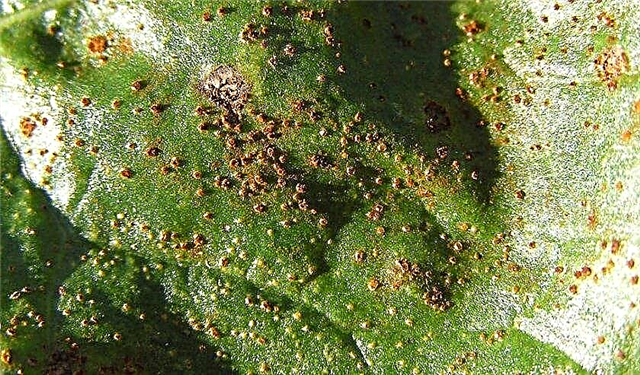
Standard methods are used for preventive purposes.: for example, the thorough destruction of all possible infectious foci, the observance of crop rotation rules, and also the introduction of phosphorus-potassium fertilizers into the soil.
Mosaic

Mosaic - a viral disease, manifested by a characteristic mosaic pattern on the leaves of beets. After some time, the leaf plates are deformed and die. In addition to beets, this disease often affects fodder beans, cabbage, spinach, sow thistle and some other weeds, the rhizome of which is an excellent refuge for the virus during the winter cold weather. Bedbugs and cicadas can become carriers of the disease, so if possible it is worth destroying them in your area.
Beetroots affected by the mosaic lose their sweetness and form much less seeds, and the worst part is that effective methods of combating the disease have not yet been developed.
Jaundice
Another viral disease of beets, characteristic of plants in the first few years of life. The causative agent of the disease is a complex of Beet yellow virus strains, combined with a weak yellowing virus of Beet mild yellowing virus.
The characteristic symptoms of the manifestation of the disease are expressed in the following features:
- the lower and middle leaves of beets turn yellow first in the upper part of the leaf plate, and then along the extreme zones, between the main veins;
- on young leaves, necrotization of the veins is often noticeable, although the adjacent areas for a long time retain their natural green color;
- infected leaves change shape and look shorter than healthy ones, they are no longer so smooth and are characterized by increased fragility;
- with the development of the disease, the yellow mucous mass gathers in the sieve tubes of the plant and the cells adjacent to them, and the membranes of the affected cells even swell slightly.
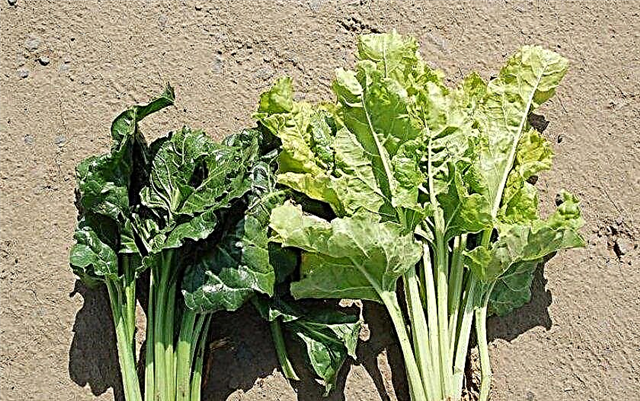
A good result in the prevention of mass beet damage is given by treatment with a wide spectrum of insecticidal preparations, among which Phosphamide can be distinguished.
Gray rot
This fungal disease affects not only beets, but also many other agricultural plants, in particular carrots, radishes, tomatoes, cucumbers and cabbage. Botritiosis (the second name for this disease) often develops during the growing season and during storage of root crops, especially if the storehouse has high temperature and high humidity.
The main manifestations of gray rot on beets differ in the following characteristics:
- brown spots of rounded shape appear on root crops, which eventually spread to the entire surface;
- greenish gray mold appears in the affected areas;
- Beetroot fruits become soft, and the color of the green mass fades.
Prevent the development of the disease it is possible by spraying the soil with Glyokladin fungicide and thoroughly cleaning the selected area from plant residues. To process beets during the intensive development of the disease will not work, since its signs above the ground are almost invisible.Important! Most often, gray rot manifests itself during storage of the harvested beets, often striking dried, supercooled or untimely harvested beets.
White rot
Sclerotinosis, it is white rot (the causative agent of Sclerotinia libertiana Fuck) is a disease of fungal origin that affects beets, carrots and other vegetable crops, and the symptoms of this problem have many common features.
The main signs of beet infection are:
- softening the affected area and its coating with abundant mycelium, to the touch resembling cotton wool;
- compaction of the affected areas, the appearance on them first of white, and then black solid tubercles, from which brilliant droplets stand out;
- complete softening of the root crop, which is easy to notice when pressing on it.
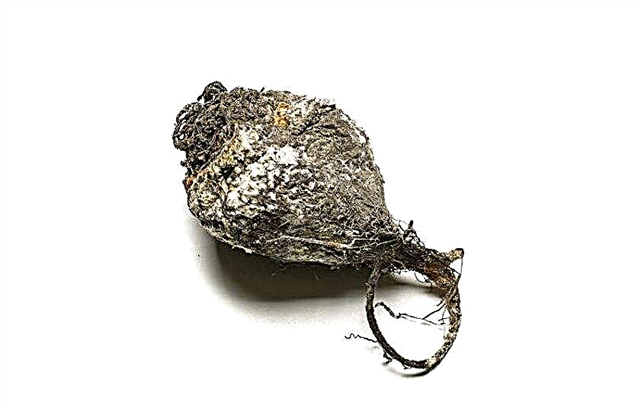
As preventative measures it is necessary to adhere to crop rotation rules, carefully select seeds and a plot for sowing beets. In the fight against white rot in vegetables and other crops, fungicidal preparations are often used, for example: Akanto Plus, Absolut, Alfa-Standard, Amistar-Extra, Amur, which can only be used in strictly prescribed by the manufacturer doses.
Red rot
Red beet rot is often called felt disease, or rhizoctonia, but there is only one pathogen - Rhizoctonia violacea Tul, which also affects carrots, rutabaga, and other root plants.
Signs of the development of the disease can be seen even at the harvest stage:
- on the entire surface of the root crop or in its separate zones, subcutaneous spots of lead-gray color are clearly visible, on top of which a red-purple mycelium is visible;
- over time, many small black sclerotia appear on the collected beets;
- the affected tissues can be either soft or hard, but ultimately the beets will still soften and completely rot;
- leaves of plants with a strong infection quickly wither.

The manifestation and spread of red rot contributes to increased soil moisture and very hot weather, resulting in a greenhouse effect. In most cases, this situation is typical for lowlands, wetlands and waterlogged peatlands.
To limit the spread of the disease and avoid massive crop loss, beets can be treated with fungicidal solutions (for example, Alirin-B or Gamair), and in the future only high-quality planting material and a more suitable site for planting it can be selected. No folk remedies for the fight against ailments of beets will help here.
Did you know? Most components of beets retain their useful properties after heat treatment, but in order to preserve the richly bright color of the root crop, it is better for housewives to add a teaspoon of sugar or vinegar to boiling water.
Blackleg
This ailment is also known as the root eater and is characteristic not only for beets, but also for many other agricultural plants. Its causative agent is fungi of the genus Pythium, Aphanomyces, Rhizoctonia, Fusarium, as well as some other microorganisms that can survive in contaminated soil for a long time.
Most often it is weakened specimens that suffer, which in the case of beets is noticeable by the following signs:
- rotting and darkening of the root;
- gaps in rows with seedlings;
- slow growth of the remaining seedlings;
- wilting of leaves, especially with a massive lesion of plantings.
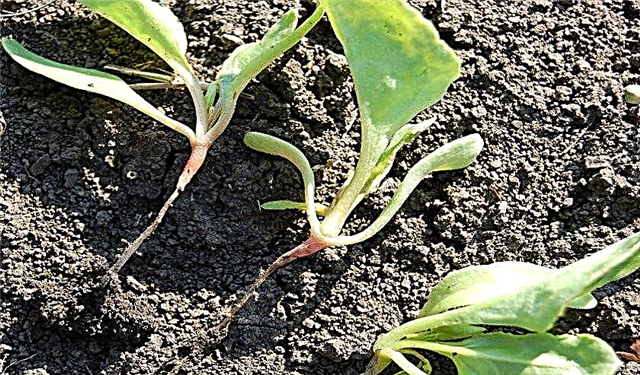
The reasons for the appearance of the root beetle are often insufficient seed placement during planting, heavy soil, poor quality of planting material and inadequate pre-planting treatment of the site, with limited application of nutrients.
At the first signs of the development of the disease, the plantings are sprayed with fungicidal preparations (for example, “Fentyuram”, “Fitosporin”, “Bactofit”) or sprinkled with wood ash, applying a layer only a few millimeters thick on the surface of the earth. Alternative methods of dealing with this ailment also include watering the seedlings with a soda solution (1 teaspoon of soda per 1 cup of cold water) and soaking the seeds in the Epina solution (1 ampoule per 1 liter of water).
Common scab
Another fungal disease, the causative agent of which in this case are microorganisms from the genus Streptornyces.
The ailment can affect any part of the beet root, but most often it manifests itself in the following:
- the appearance of rough, scab-like areas on root crops;
- the formation of a dark brown crust;
- the formation of several ring interceptions in the neck area;
- slowing down the growth of beets.

An effective remedy for the problem is the systemic fungicide "Skor", as well as its analogues "Diskor" and "Chistotsvet". It is also useful to spray plantings with copper oxychloride, Kartotsid and Abiga-Peak preparations. Folk methods of struggle using traditional ash or soap will not bring the proper result.
Bacterial cancer
Stuffing of the roots is a bacterial disease (the causative agent of the bacterium Agrobakterium tumefacienc), which is slightly less common than others on beets, but at the same time can significantly reduce the quality of the crop.
The main signs of bacterial cancer include:
- the appearance of various growths on the root neck of beets, which in some cases exceed the size of the root crop itself;
- smooth surface of neoplasms;
- the presence of a clearly visible border between the growth and root crops;
- sprouting;
- the appearance of tumors on leaf plates (rarely).
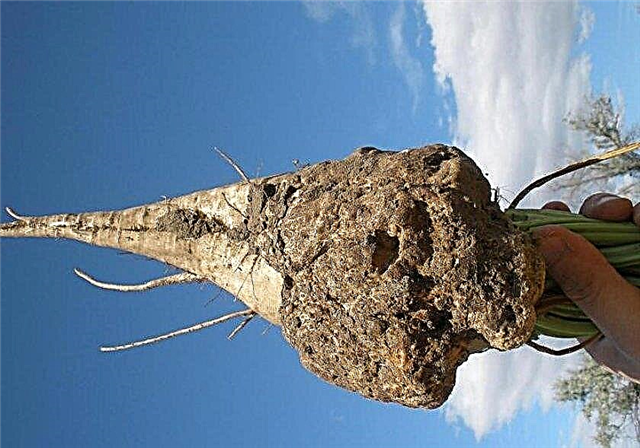
The agrotechnical methods for controlling beet bacterial cancer are adherence to agrotechnical requirements, selection of only resistant varieties and careful selection of a site for planting. Of the chemicals for treating goiter, you can buy Fitolavin, Fitoplasmin, or Fitoverm. The latter can also be used as a preventive measure to regulate soil microflora.
Did you know? The record for growing the heaviest beets was set by the Dutchman Piet de Gude, who in 2006 introduced a root crop weighing 71.050 kg.
General preventive measures
Based on the foregoing, it is not difficult to determine the main preventive measures that will help protect your beetroot plantings from almost any disease.
The main list includes:
- obligatory crop rotation with alternating planted crops on one site (it is advisable to plant beets in the same territory no earlier than 2-3 years after the previous harvest);
- tillage by applying disinfectants, fertilizer with manure and special vitamin and mineral complexes;
- liming of soil using quicklime, flour or wood ash;
- meticulous selection and pre-sowing processing of planting material (it is advisable to soak the beet seeds in a weak solution of potassium permanganate or other antimicrobial mixtures before planting on the site).










